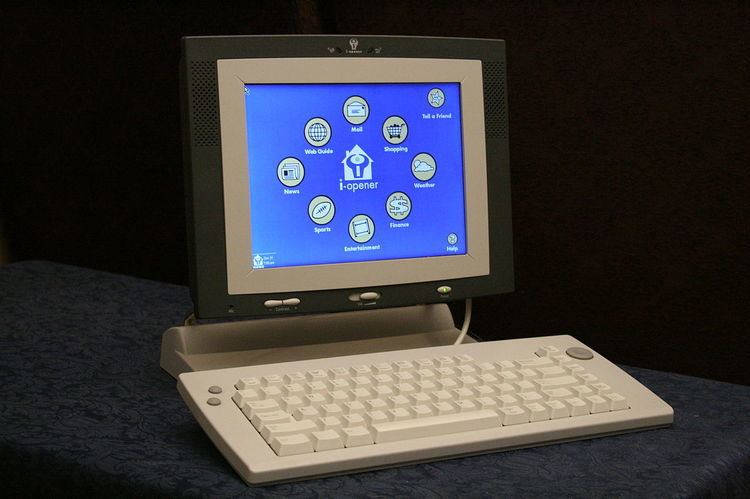 | ||
The i-Opener was a low-cost internet appliance produced by Netpliance (now known as TippingPoint) between the years 1999 and 2002. The hardware, cheaply available, became popular among collectors who modified the appliance to run as a normal PC. This made the device capable of running PC operating systems, such as Linux and Microsoft Windows.
The original retail price was $99. The actual cost of the device was roughly estimated between $300 and $400. The devices were sold as a loss leader for monthly Internet service. However, as soon as a hacking method became available on the Internet (in 2000), many customers canceled the monthly service, which eventually made the business model unsustainable. Similar business models and failures were also seen with the 3Com Audrey and Virgin Webplayer.
Hacking
Ken Segler, an engineer from Las Vegas, discovered that the i-Opener was simply an x86 compatible PC inside a custom enclosure. When he removed the back cover of the device, he found a Socket 7 CPU socket with a 180 MHz IDT WinChip C6 CPU, a SO-DIMM socket, an IDE plug (which allowed adding a hard drive and CD-ROM, making the device nothing less than a $99 PC with an LCD screen), and a 16 MB SanDisk memory chip. However, the pins on the IDE connector were reversed, requiring the making or ordering of special cables and adapters to connect a hard drive to the unit. Attempts by Netpliance to thwart hacking included gluing the BIOS chip into its socket with epoxy and modifying its settings (rendering it unable to detect hard drives), limiting the type of CPU one could use to that included with the unit, and even cutting the pins on the IDE connector.
